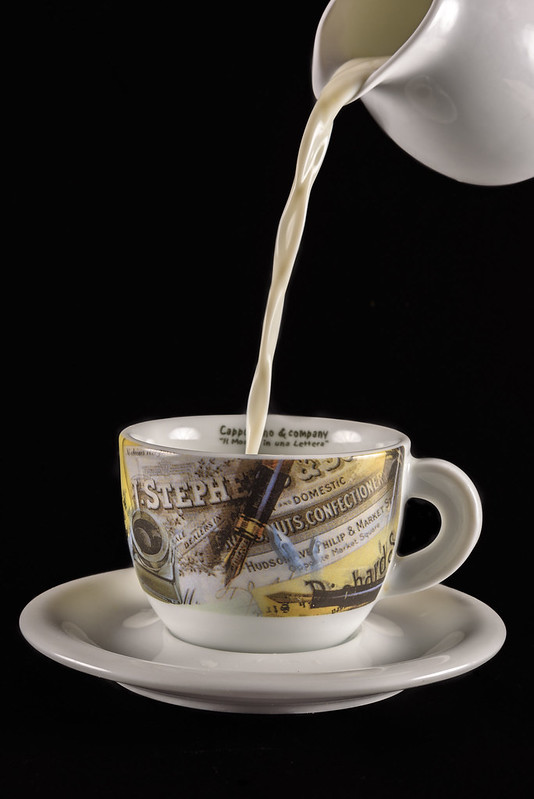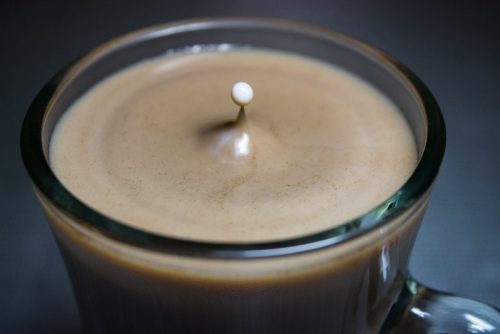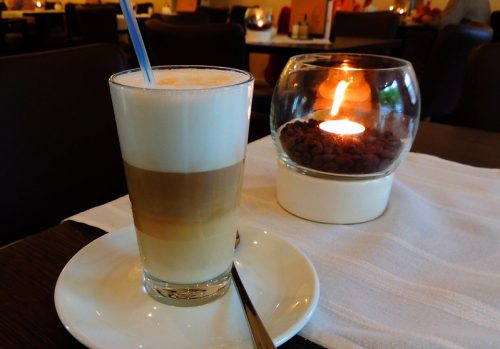Cafe Au Lait – Simple And Delicious French Coffee Recipe

French-speakers will immediately know what this article will be about. And even those who don’t will know that it has to do with coffee and something french related.
Café au lait is French for “coffee with milk” and it is precisely that, coffee with hot milk. Its origins are in France indeed and date back to the time when coffee was becoming a common beverage across Europe, around the 17th century.
Many people at the time weren’t used to the taste of black coffee, as some today aren’t either. And milk was widespread as a breakfast beverage in any European country. Thus, the marriage of coffee and milk was borne out of the need to make the black drink easier on the palate.
What is Cafe au Lait?
Café au lait is the version of coffee and milk that was born in France at the time. It has similar drinks across every European country and other countries colonized by Europeans. Caffé latte in Italy, café con leche in Spain and Latin America, kawa biała in Poland, milchkaffee in Germany, café con leite in Portugal and Brazil and many others.
All were born around the same decades. All have slight differences due to the culture that developed the recipes. Café au lait uses the coffee that comes from either a French Press or a filter machine, as that was how the french used to brew coffee when café au lait was born.
The drink is made of one part of brewed coffee and one part of steamed milk. That’s about it, as simple as it gets. Nowadays variants that make use of any type of brewed coffee, like an espresso exist.
Technically a café au lait should be done with a French Press or from a strong filter coffee only. Typically, café au lait doesn’t call for any foam on top, unlike a cappuccino or a latte, but some baristas play with the tradition and add some.
Cafe au Lait Recipe
With that said, it is straightforward to guess the original recipe of a café au lait. To make one, be sure to have a strong, dark roasted coffee on hand. It should traditionally be roasted to a french roast level, thus extremely dark. This to make it nicely contrast with the sweetness of the steamed milk.
Brew it with a filter coffee machine or a French Press. If you have a bold setting or something similar on your machine, use it to make the coffee as strong as possible. Don’t worry about it being too bitter, the milk will fix this.
Then pour equal amounts of coffee and steamed milk, all together, in a cup. If you want to be super-respectful of tradition, use a medium bowl instead of a cup, like it was once done in France. Nowadays a cup is more common anywhere though.

Once done with the pouring, stir the coffee and milk, allowing them to mix. The resulting drink should be light brown in color. Optionally a bit of milk foam can be added, but as we said, originally it was done without any. Add sugar to taste. Serve hot.
It is an extremely easy, plain drink that lends itself to plenty of modifications and variants. The most common is making a café au lait with an espresso machine. Substituting the black coffee from a French Press or filter machine with the espresso (usually a double dose). But that would be wrong and making a different drink: the caffé latte.
Espresso based drinks were and are strong in Italy and it is natural that the version of coffee with milk that is the most popular in Italy is made with an espresso. Thus, technically a café au lait made with espresso is the Italian version, named caffé latte. You’d be making a “wrong” café au lait this way.
Comparison
Café au lait is a very simple drink and thus frequently mistaken for others, similar ones, that are actually variations of it. Where the caffé latte is simply the Italian variant of the café au lait, often people confuse it with a latte. The difference is in the coffee and milk ratio.
The latte has much more steamed milk than a café au lait, and the milk foam, that a latte has and a café au lait, as we have seen, shouldn’t. Drink a latte when you want milk with some foam and a bit of coffee. While a café au lait is for when you want a more balanced taste of both milk and coffee.
Another drink commonly mistaken for a café au lait is the macchiato. There are two variations of this drink, the espresso macchiato, and the latte macchiato. The former is an espresso, double perhaps, which is added on top of a splash of steamed milk. Thus, a “stained” espresso. Here the emphasis is on the espresso and the milk flavors are barely noticeable.
A latte macchiato is instead more similar to our café au lait but presenting some important differences. First, a latte macchiato is an espresso-based drink, thus making it closer to a caffé latte of the Italian tradition than a french café au lait.
Second, in a latte macchiato the order in which you pour the coffee and milk matters. The espresso should be added to the steamed milk and not pour together, as in a café au lait.
Third, a latte macchiato has some milk foam, which in some cafes can be a thick layer on top. Some bars make a latte macchiato as a layered drink, in which steamed milk is at the bottom then topped with the espresso and finally with the milk foam. The coffee and milk don’t mix this way but one stays on top of the other.

Another big difference compared with the café au lait is in which both are meant to be savored at the same time. In a latte macchiato, the emphasis is much more on the milk, enriched by its foam, wherein a café au lait both milk and coffee have equal importance.
In Conclusion
Whatever drink you prefer, give a shot to a café au lait. Especially if you have a hand on some very dark roasted beans. It can make them taste awesome even to the least accustomed to the black coffee experience among us.